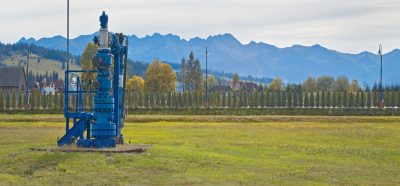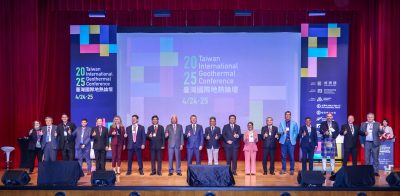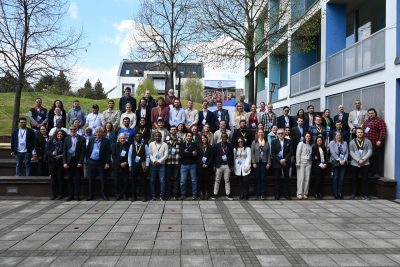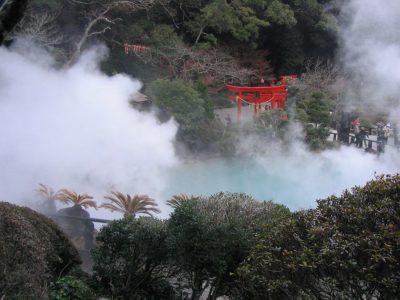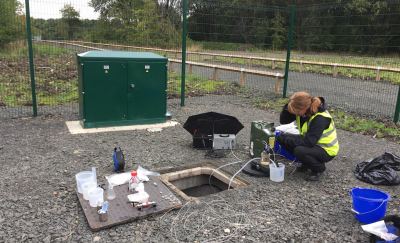Coso Operating Co. seeking to pump water for depleting geothermal reservoir
Coso Operating Company (COC), operators of the Coso Geothermal Plant, has requested a permit from the county to pump that water from its fallowed Hay Ranch property to replenish a depleting geothermal reservoir.
Reported locally, “Coso Operating Company (COC), operators of the Coso Geothermal Plant, has requested a permit from the county to pump that water from its fallowed Hay Ranch property to replenish a depleting geothermal reservoir. COC is reporting that the depletion equals a 3.6 percent reduction in power generation, the equivalent of enough energy to power 10,000 homes.
The geothermal reservoir is the hot fluid, thousands of feet below the surface, that travels up wells at the power plant, then flashes into steam at the surface. The steam then pushes and drives turbines that, in turn, drives the electrical power generators. Through time, the reservoir becomes depleted due to evaporation and must be augmented to maintain reservoir pressure.
COC is asking for a 30-year Conditional Use Permit, or CUP, to pump the water, build necessary infrastructure and pipe the water nine miles from the ranch to the plant. If approved by the Planning Commission, the CUP will include mitigation and monitoring measures, enforceable by law, to ensure that the amount of water pumped will not “unreasonably affect the environment or overall economy of Inyo County.” The amount of water requested to be withdrawn is 3,000 gallons per minute, or 4,839 acre-feet per year. According to data from the Bureau of Land Management and county Water Department, when Hay Ranch was producing alfalfa on 500 acres, it used as much as 3,900 acre-feet per year with no adverse effects to Little Lake or other ground water users at that time.
According to the Final Environmental Impact Review (FEIR), the project demonstrates “no significant impacts with monitoring and mitigation.”
The monitoring consists of more than 20 wells spread over 13 miles between Haiwee Reservoir and Little Lake. These monitoring wells include trigger points of water levels that, if reached, will require COC to reduce or stop pumping. “We believe the project stands on its merits,” said Joe Greco, senior vice president of Terra-Gen Power, one of COC’s parent companies. [Both are owned by energy investment firm Arc-Light Capital Partners]
To prove it, COC is investing more than $12 million on the project that could potentially be shut down after as little as a year if trigger points are reached.
Greco also explained that COC and Terra-Gen are in the renewable energy business and harming the environment would go against its philosophy and culture of being environmentally friendly.
According to data from COC, since the geothermal plant’s inception it has “reduced carbon emissions in the region by approximately 27 million tons as compared to fossil-fired generation.”
However, opposition to the project varies from allegations of an inadequate environmental review of the project, to assumptions that COC has so much invested in the plant already, it will proceed with or without the Hay Ranch water.
Rex Allen, chairman of the County Water Commission, opposes the project on these grounds. Allen explained his position in a letter he wrote to the county Planning Commission as a private citizen.
Allen’s argument is based on bond rating reports that he interprets as COC telling the bond raters, “We think we will get the Hay Ranch water and it will probably help cut our costs, but we will do just fine anyhow.”
Allen wrote that COC will make the geothermal plant work with or without the Hay Ranch water and that, “Inyo County is not going to lose significant tax monies no matter what we do, and if we play our cards right we may yet improve the tax take while saving our precious groundwater and protecting a very pretty desert valley.”
Another important piece of this puzzle is that COC is one of the largest property taxpayers in Inyo County, second only to the Los Angeles Department of Water and Power. And, the augmentation from the Hay Ranch project was included in a recent re-assessment of the plant’s property value by the county.
COC Site Manager Chris Ellis said that the plant would continue operating without the Hay Ranch water, but the energy output would drop. If the energy output drops so does the value of the plant, which equals less property tax revenue for the county.
One alternative solution to the Hay Ranch water would be for COC to upgrade the existing facility with a dry-cooling system to try and reduce evaporative water loss.
Ellis explained that not only is this alternative expensive (the estimate cost is between $110 million and $250 million), but it would also not be an efficient project for COC.
Ellis described the dry cooling system as a giant vehicle radiator and fan that would require an enormous geographic space to construct and maintain. He added that the dry-cooling works well in cooler climates, such as the geothermal plant near Mammoth, but in hot climates, like the Coso location, the system actually runs less efficient in the hotter months when energy demand is highest.
“We want to remain profitable,” said Greco, “but we will not do it at any cost.”
Ellis and Greco said they also wanted to clear up any misconceptions the public may have about the Hay Ranch project.
To begin with, they said that the CUP is for the Hay Ranch project only; the geothermal plant was approved by the county in 1987. And, the CUP will allow the plant to generate at levels already previously approved – not to allow the plant to generate more power than currently permitted.
They explained that the environmental impact reports were done by a private, unbiased agency, unaffiliated with COC, and that the report is “very conservative.”
“What we’ve requested is what is sustainable,” Ellis explained.
Some of these conservative estimates in the FEIR include that inflow of water to the basin are based on average precipitation levels above 4,500 feet elevation, so water that falls on the valley floor has not been included in the basin re-charge rate.
Another outspoken opponent of the project is the Little Lake Ranch and private hunting club that has argued that the pumping will have devastating, permanent affects to the lake and surrounding environment. It claims that the FEIR does not adequately address these effects.
However, it is stated in the FEIR that the trigger points established in the CUP will prevent a decrease of greater than 10 percent in flows to Little Lake from ever occurring. There are also requirements that “drawdown levels over time be kept below defined trigger levels” and will act as an early warning system that would allow the project to change, reduce or even stop pumping before acceptable drawdown levels ever occur at Little Lake.
The project has been supported by Governor Arnold Schwarzenegger,State Senator Roy Ashburn, Inyo County Superintendent of Schools Terry McAteer and the county’s Water Department.
The Inyo County Planning Commission is holding a public hearing on the project at 9 a.m. Wednesday, March 11 at the Board of Supervisors Room in Independence.
According to Sharon Birmingham, Planning Commission secretary, at this meeting the commission will review and vote on a resolution of the plan. The county Water Commission has recommended the Planning Commission reject the CUP, or if it is approved, the Water Commission wants extra mitigation measures included. The Planning Commission will have the final say on the matter, pursuant to Section 15022 of the California Environmental Quality Act guidelines. The Board of Supervisors will hear the matter if the CUP is appealed.”
Source: Inyo Register


